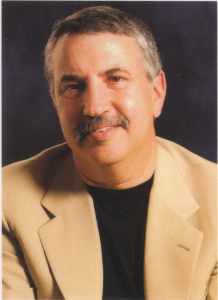“Thomas Friedman, the foreign-affairs columnist of the Times, a three-time Pulitzer Prize winner, and the best-selling author of reassuring books about unsettling things, finished his column... while sitting at a plywood dining table in a hut built on the ice sheet in northern Greenland, far above the Arctic Circle.”
 So begins a long article about the life and writings of one of the most important journalists of our times. The first of his popular books is The World is Flat (2006), “for which he chose a metaphor of flatness to describe economic globalization,” writes Ian Parker, who recently profiled Friedman in The New Yorker magazine. In 2008 Friedman published Hot, Flat and Crowded, about the environmental crisis. He continues the “flat earth” metaphor, which came to him after meeting Nandan Nilekani, head of Infosys, the Indian software consulting company. If he’d trekked in Nepal instead would Friedman still think the world is flat?
So begins a long article about the life and writings of one of the most important journalists of our times. The first of his popular books is The World is Flat (2006), “for which he chose a metaphor of flatness to describe economic globalization,” writes Ian Parker, who recently profiled Friedman in The New Yorker magazine. In 2008 Friedman published Hot, Flat and Crowded, about the environmental crisis. He continues the “flat earth” metaphor, which came to him after meeting Nandan Nilekani, head of Infosys, the Indian software consulting company. If he’d trekked in Nepal instead would Friedman still think the world is flat?
Each book has sold millions of copies, with translations into dozens of languages. Friedman’s writings are typically eye-openers and wake-up calls about what’s gone wrong in the world and what each of us can do to right it a little. Everything he writes sells. He is so effective that many people think that whatever Friedman publishes must be important.
How does Friedman write?
“I write my books by writing my books...,” he says. “I don’t start with six months of research.” In fact, he writes all the time without research assistants. While his wife drives, he writes on his laptop computer in the next seat. And he loves airplanes—”No phone calls, no interruptions”, he says. “If I’m on an airplane for five hours, that’s my happiest time”—for writing.
How does he describe his books?—”as books about how to think about a problem,” he says. What he writes is “Not necessarily the specific detailed answer.” His writing is simple and accurate; but “To simplify something accurately,” he points out, “you’ve got to understand it deeply.”
Besides books, Friedman’s main job is as a columnist for The New York Times. Since 1995 Friedman has written over 1200 columns for the Times. Each is fresh and new, provocative, and exceedingly well written. How does he do it?
“The easiest [essays] are the ones when you open up a vein,” he says. His examples are writing about Bush or Obama. “It takes an hour, it takes you as long as your fingers take to type the letters,” he told Parker, who then goes on to describe him as someone who “seems to think in columns, and one can regard this as both a psychological oddity and an unusual guarantee of authorial sincerity.”
Friedman is also the kind of writer who “comes up with phrases and hooks that people hang on to, sometimes for dear life. I think that’s a unique skill, “ says Parker. “He writes for the masses. His work is extremely intellectual, but it takes the form of a conversation with a taxi-driver.” His writing has not only won him three Pulitzer Prizes, one of the highest awards for journalism and has put him on the Pulitzer Prize committee (which makes him ineligible for any more).
At this point, where I’ve spilled a lot of ink already and am running out of column space, I have to ask what we can learn from this prize-winning journalist? For one, that a dedicated writer can do the job anywhere—on a glacier or a mountain trail, by a campfire or while riding an elephant in the Chitwan jungle. For another, to do it well requires knowing your subject intimately, then writing about it simply. And, not least: Don’t dither. Write. Up in the cold of Greenland, Friedman asked himself: “How do I do a column that isn’t just ‘Look at me, I’m in an igloo’?” He could have been in Kathmandu, he could have been anywhere, with the same result—he doesn’t just tell us, he shows us in well chosen word images.
Good writing!
It’s not Greenland, but I wrote this column sitting up close to a heater on a very cold afternoon. My inspiration was Ian Parker’s profile of Thomas Friedman entitled ‘The bright side’, in the November 10, 2008 issue of The New Yorker magazine.

A new hangout for cold-pressed juice connoisseurs
Instagram is...










